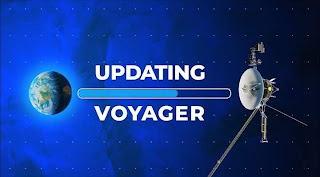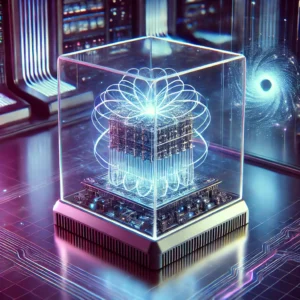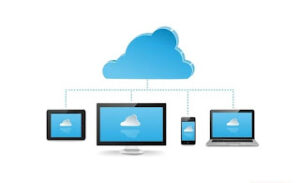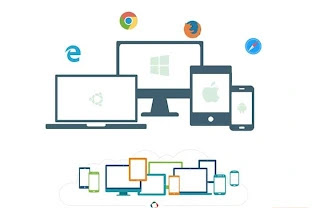In 2015, NASA announced a different kind of job notification. The notification calls for applications from software engineers who can work proficiently in two programming languages namely ‘Fortran’ and ‘Assembly’.
Nowadays, software engineers do not have to work with these two programming languages of the 1940s and 50s. As a result, most of the young engineers passing out in recent times are not proficient in these two programming languages.
NASA is always working with the latest technology. So the question may arise, why do they need people who know this old programming language?
In fact, people skilled in ‘Fortran’ and ‘Assembly’ work at NASA to operate the two spacecraft that have been running non-stop for decades in space. Voyager 1 and Voyager 2 were built using Fortran and Assembly languages.
And the two spacecraft are currently hurtling through space about 15 billion miles from Earth.
Voyager 1 and 2 continue to send information about space from such a distance. And NASA engineers are even updating the spacecraft’s software as needed. Before knowing how it is done, let’s have an idea about these two spacecraft.
History Of Voyager 1 And Voyager 2
Currently, the farthest man-made object from Earth is called Voyager 1. In August 2012, the spacecraft left our solar system.
The space where Voyager 1 and 2 are currently running is known as interstellar space. That is, currently these two spacecraft are not inside any star ring.
NASA launched Voyager 2 on August 20, 1977 and Voyager 1 16 days later.
Voyager 1 observed Jupiter, Saturn and Saturn’s largest moon Titan. For the first time in history, Titan was photographed by Voyager 1. The spacecraft also sent information about Titan’s weather, magnetic field, and orbiting comets and other objects.
Instead of being sent in the same direction as Voyager 1, Voyager 2 is sent in a different direction. This spacecraft also observes several planets in our solar system and sends information about them. Voyager 2 is the only spacecraft to pass by Uranus and Neptune so far.
However, the mission period of these two spacecraft was extended after the observation of the planet. The spacecraft is sent out of our solar system.
Of course, many were interested in sending Voyager beyond the solar system even before the launch. One of them was the then Cornell University professor Carl Sagan. A group of researchers led by Carl Sagan created a disc named ‘Golden Record’.
Their hope was that if Voyager reached an intelligent being outside our solar system, they would learn about our world from this golden record.
Discs originally recorded images, music, sounds and messages.
The disc contained images of humans and other creatures, various scientific facts, and spoken human greetings. The recordings included the calls of whales, the cries of babies, the sound of waves breaking on the sea shore, and music by famous composers.
Also among the human greetings in 55 languages on the Golden Record was Bengali, where a man’s voice recorded “Namaskar, Viswe Shanti Hoke”.
Voyager 1 and Voyager 2 each carried a copy of the Golden Record.
Why Does Voyager Need A Software Update?
The two Voyagers are working on computers that are almost 50 years old. The memory or data storage capacity of this computer is only 70 kilobytes. Although 70 kilobytes seems much less than modern times, Voyager crossed the solar system with the help of this memory.
But like any device, Voyager’s computer also has problems. For example, just last year (2022) Voyager 1 was sending incorrect information about its position to space. The software is updated to fix that.
In addition, Voyager has a thruster, a type of device to keep the direction correct. Basically the combustion of the fuel causes tiny sparks to fly out of the thruster. In this, Voyager automatically adjusts its direction in line with the Earth.
However, due to decades of use of thrusters, residual fuel accumulates in the pipes, disrupting the thruster’s performance. If NASA engineers did not take action, the thrusters would have failed very quickly.
But how do they take action? There is no way to clean the thruster pipes 15 billion miles from Earth.
But it has been possible to reduce the use of thrusters through software updates. In this way, it has been possible to increase the life of Voyager in space.
Computer Systems On Board Voyager
The Voyager spacecraft has three computers.
In between, the main computer controls all the important devices. It also maintains the temperature of the spacecraft and controls two other computers.
The main computer is called ‘CCS’, which stands for ‘Computer Command System’.
A second computer is responsible for maintaining Voyager’s direction. Its name is ‘AACS’ (Attitude and Articulation Control Subsystem). This computer uses a predetermined method to keep Voyager’s antenna pointed at Earth.
Thrusters are used for this task under the instructions of this computer.
A third computer called the ‘Flight Data Subsystem’ (FDS) stores scientific data and images collected by Voyager. And how these information and images will be sent to the world, that work is also in charge of this computer.
How Software Updates Are Done
Voyager has no operating system. And Voyager is not based on any programming language. Because programming languages require a lot of memory, which Voyager doesn’t have.
But the most remarkable feature of Voyager’s computer is its memory.
Every computer has a special network-like device that acts as its memory. Each intersection of this grid, where two wires meet, stores 1 bit of information.
The information stored in this 1 bit is either 1 or 0. That is, Voyager’s memory operates entirely on a binary number system and has no other code or operating system associated with it.
Voyager’s memory is built in this way so that even if the power goes out, the data is not erased from the memory.
The downside, however, is that updating Voyager’s software requires installing new code on the two spacecraft’s computers. And Voyager’s computer accepts instructions only through the digits 1 and 0.
But we humans cannot write code based only on 1’s and 0’s.
For this reason Voyager’s software was written on Earth prior to launch based on two programming languages: ‘Fortran’ and ‘Assembly’.
The software is then converted so that Voyager’s computer can understand it.
Still the same procedure is followed for any software update of Voyager.
Information about that update is then sent to Voyager.
Data is sent from Earth to Voyager at a rate of 16 bits per second. And it takes about 24 hours for any particular update to reach Voyager.
As soon as a software update is sent to Voyager from Earth, Voyager stops all its operations and starts receiving the software update in memory.
This means that the array of 1s and 0s in each Voyager computer’s memory is rearranged during the update.
In 2010, when updating the software like this, only one bit of memory was moved around. That is, Voyager receives updates of 1 instead of 0. This caused problems in all parts of the spacecraft.
Another software update was sent as soon as the world caught this problem. This saved the spaceship from breaking down on the journey.
Some Of Voyager’s Notable Software Updates
Since launch, Voyager has been receiving regular software updates for various purposes.
While Voyager 2 was at Neptune, NASA engineers ran into some problems taking pictures. Being farther from the Sun, Neptune receives 900 times less light than Earth.
So Voyager’s camera needed to take long exposures to photograph Neptune. So engineers reprogrammed Voyager’s computer system with that update.
Once again, Voyager’s software update started shutting down various components like the camera while leaving Neptune. This reduces Voyager’s power consumption and memory load.
Besides, a software update was done in 1995. According to the update, if any part of the spacecraft malfunctions, it is instructed to restart it.
About 20 years after this update, in 2014, a part of Voyager 1 developed a problem. And as per the 1995 directive, Voyager shut down and restarted that component to get it working again.
The Future Of Voyager
More than 4 decades have passed since the launch of Voyager. Even during the construction of this spacecraft in 1977, the engineers may not have thought that Voyager would be operational in 2023.
Basically, with each effective software update, NASA engineers have extended Voyager’s life a little bit.
By 2036, the two spacecraft will be out of the network that NASA uses to communicate with Voyager.
But scientists believe that Voyager’s instruments will fail one by one before then as the power supply runs out.





